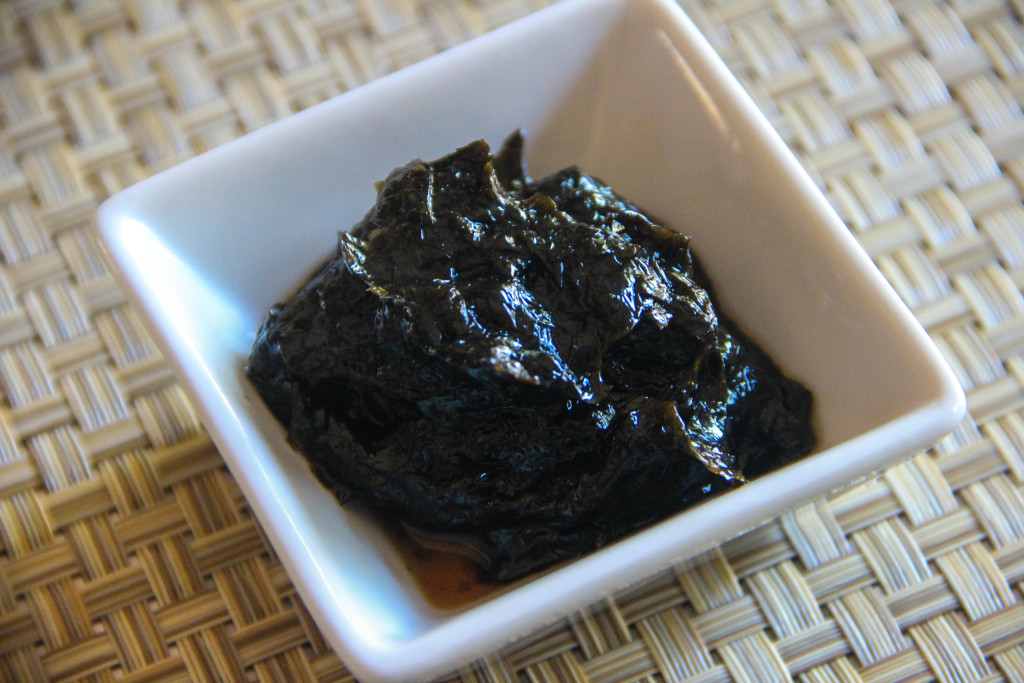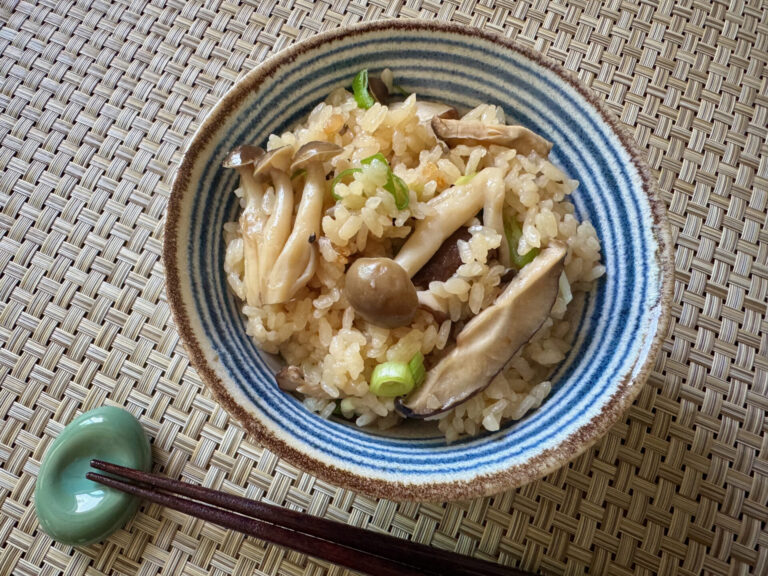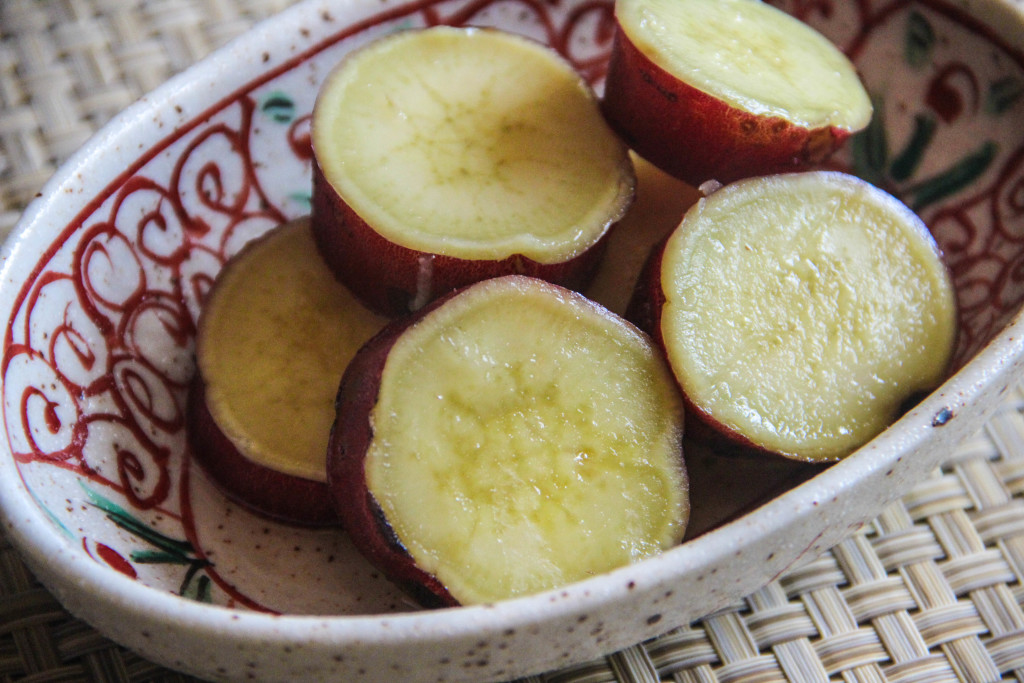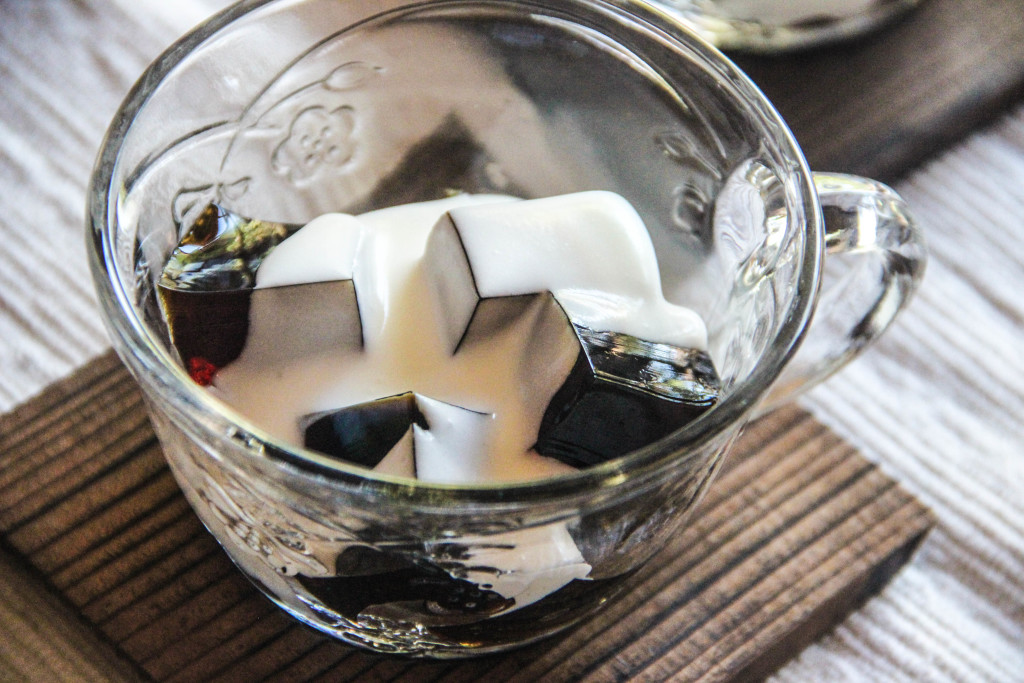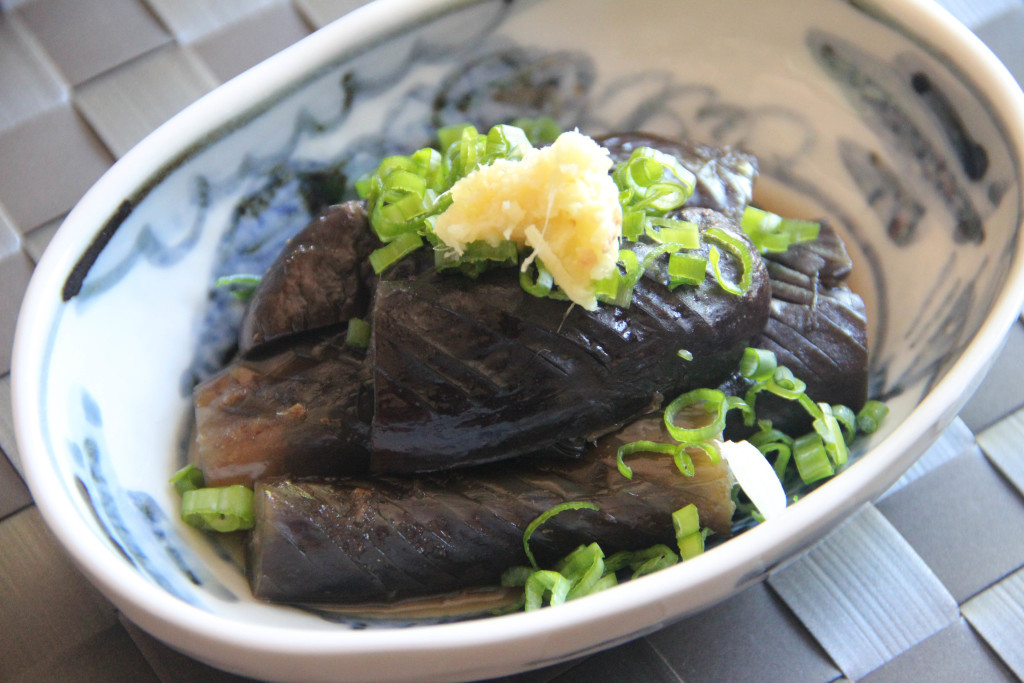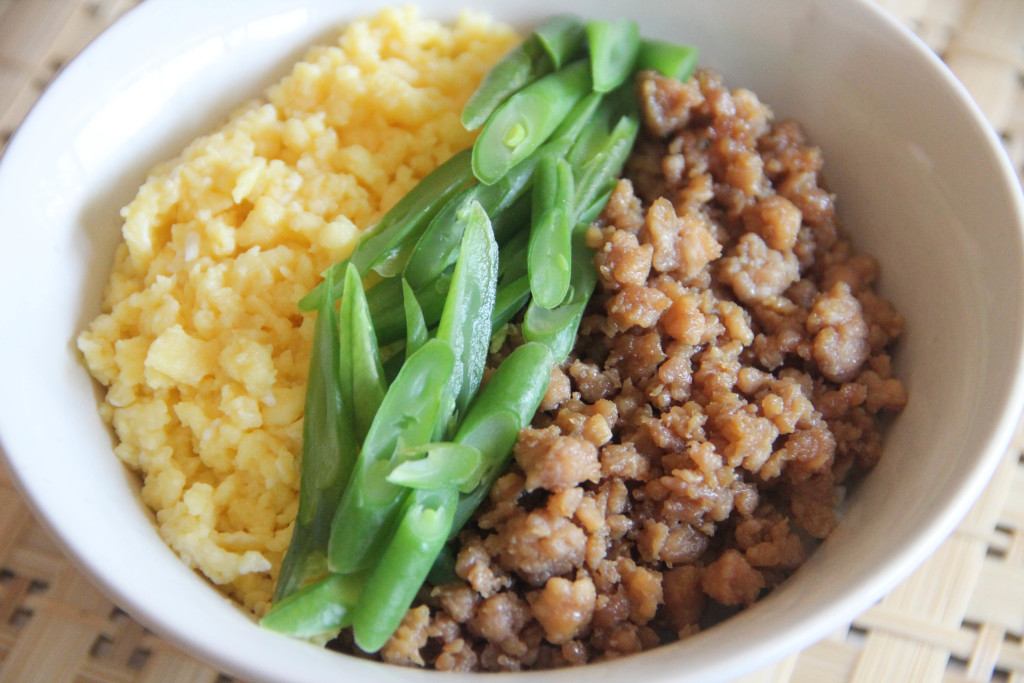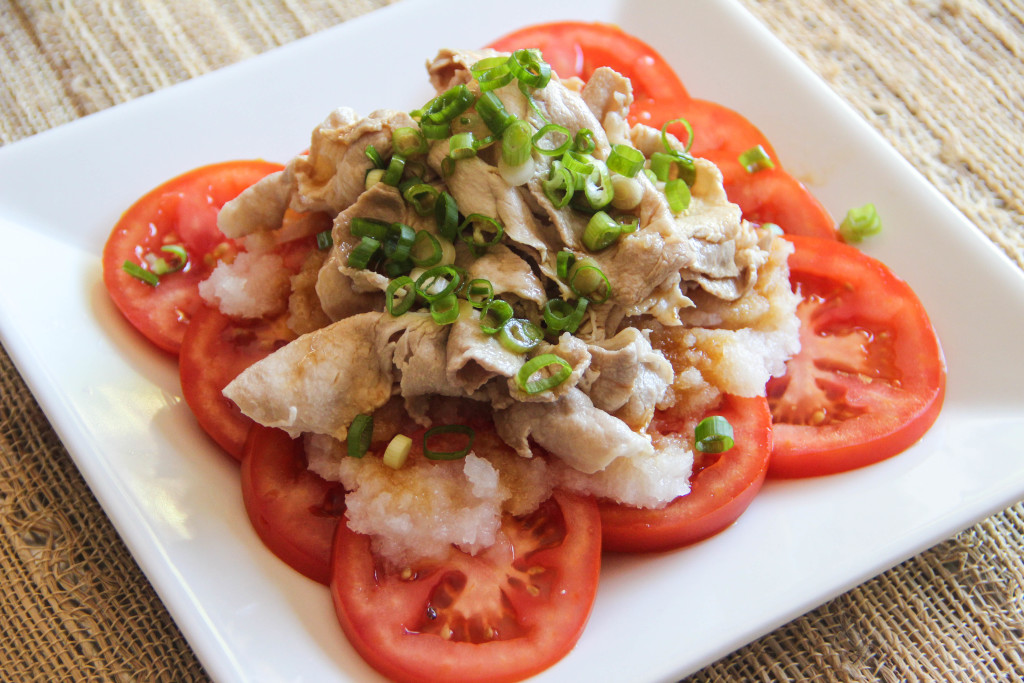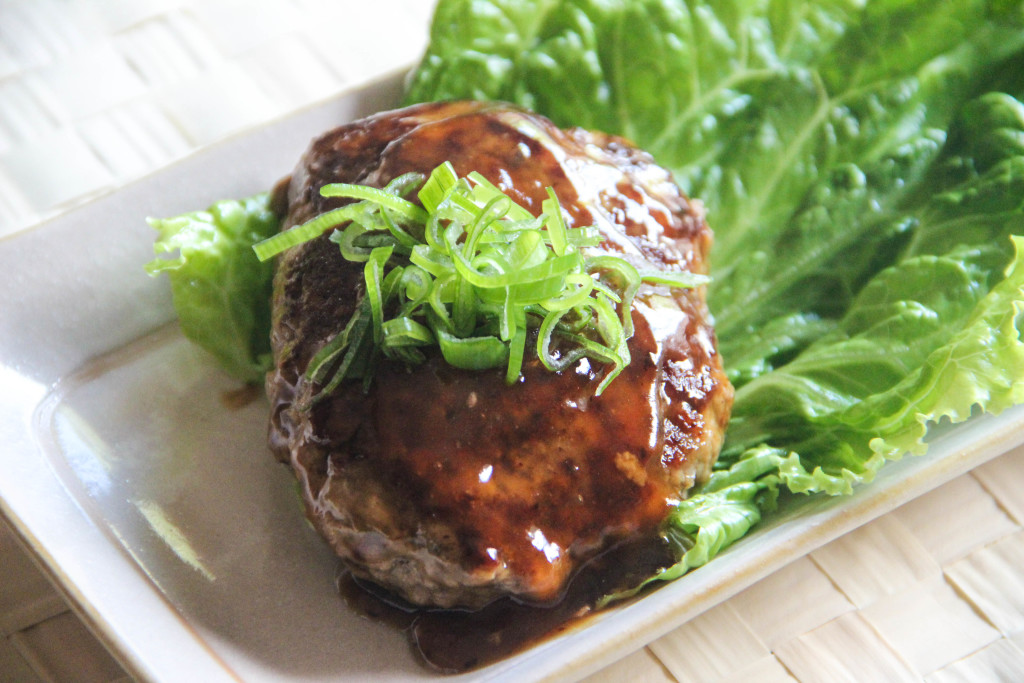Tsukudani is usually seafood or seaweed strongly flavored with Soy Sauce. Tsukudani made from Nori (Roasted Seaweed) is one of the most popular ones. Nori Tsukudani is a black paste and may not look very appetizing for people who are not familiar with it, but it is a surprisingly tasty accompaniment for Steamed Rice.
Kinoko Gohan (きのこご飯) is a type of Takikomi Gohan, a Japanese mixed rice dish in which ingredients such as vegetables and meat are cooked together with rice. In the case of Kinoko Gohan, the primary ingredients—aside from rice and seasonings—are mushrooms (kinoko), making it a vegan-friendly dish. The umami-rich flavor and aroma from the mushrooms are absorbed into the rice as it cooks, resulting in a wonderfully savory and aromatic dish.
Traditionally, Kinoko Gohan is enjoyed in the fall when mushrooms are in season. However, with a variety of fresh mushrooms available year-round, you can enjoy this delicious rice dish anytime.
Satsumaimo Amani is sweet potato cooked in sweet syrup. It is a great small side dish or snack. Satsumaimo Amani is not something you eat at restaurants, but it is often made at home in the fall.
Satsumaimo, Japanese sweet potatoes, are in season in fall and winter, so Satsumaimo is the taste of fall in Japan. They are purple outside and yellow inside, dense and sweet, different from western yams which are usually orange inside. Because of the sweet taste, Satsumaimo is used in many desserts, like simple baked potatoes or more complicated sweet potato cakes. Satsumaimo are used for savory dishes too, such as using them in Tempura or adding to Miso Soup. The sweetness of the potatoes and salty seasonings complement each other very well.
Coffee Jelly (コーヒーゼリー) is a cold jellied dessert made throughout Japan from black coffee and gelatin. As Coffee Jelly is not too sweet, although you can adjust the sweetness however you like, and rather light, it is a perfect after dinner dessert.
Nasu Nibitashi is braised eggplants cooked in Dashi with Soy Sauce and ginger. It is a very popular side dish but may be hard to find at restaurants outside Japan even though the ingredients for the dish are pretty simple. Nasu Nibitashi can be eaten either at room temperature or cold. It is great chilled during a hot summer.
Soboro is ground meat cooked with seasonings such as Soy Sauce and sugar. You stir the meat as you cook it, breaking it up to form small pieces or pebbles, giving Soboro its typical appearance and texture. Soboro made from chicken is the most typical dish, but you can also use pork or some kinds of fish to make it.
Pork Shabu Shabu Salad is a perfect dish for a hot summer dinner. It is easy to cook with a minimal amount of cooking time using heat, and you can cook ahead earlier in the day when it’s not so hot.
Shabu Shabu is a Japanese hot pot dish (Nabemono), with paper-thin sliced beef. It is cooked at the dinner table using a portable gas stove and we eat it as we cook. For this dish though we used sliced pork, and made it into cold salad. If you prefer, you may use sliced beef too. You can also add or replace different vegetables such as Daikon sprouts, lettuce, and cucumber.
Hamburger Steak is a very popular western style dish in Japan, and it is often made at home or served at many restaurants. While regular hamburger steak is made from ground pork and beef, Tofu Hamburger Steak is made from a mixture of Tofu and ground meat. Although Tofu Hamburger Steak has fewer calories and a little softer texture, it tastes meaty enough for meat lovers.
Mugicha is a Japanese summer cold tea made from roasted barely. It has a very fragrant taste from roasting, almost like coffee. Because Mugicha is a no-caffeine tea, it’s been loved by everyone from the young to the old. It is the most popular drink of all time during summer in Japan.
Iced Matcha Latte is a cold milk drink with Matcha green tea powder and sweetener. It’s not really a latte since there is no espresso in it. But, it has became very popular since a big coffee shop chain put it on their menu.
